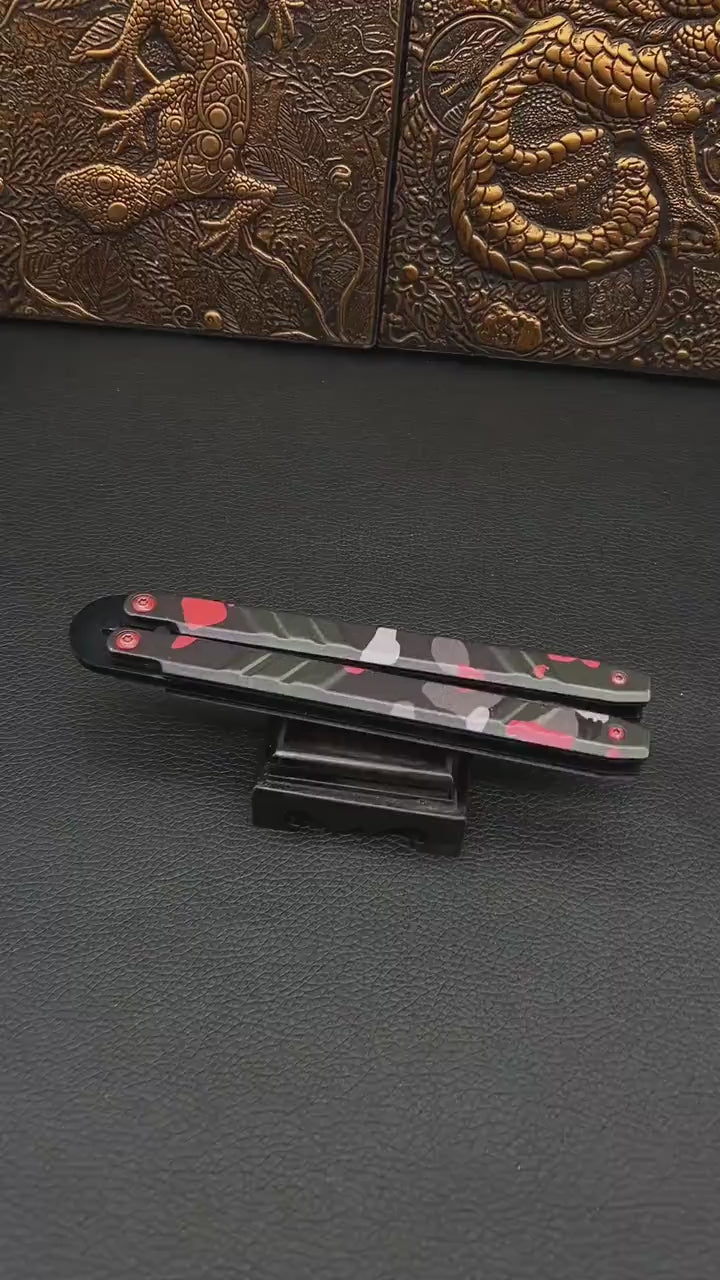Butterfly Knives Best Sellers
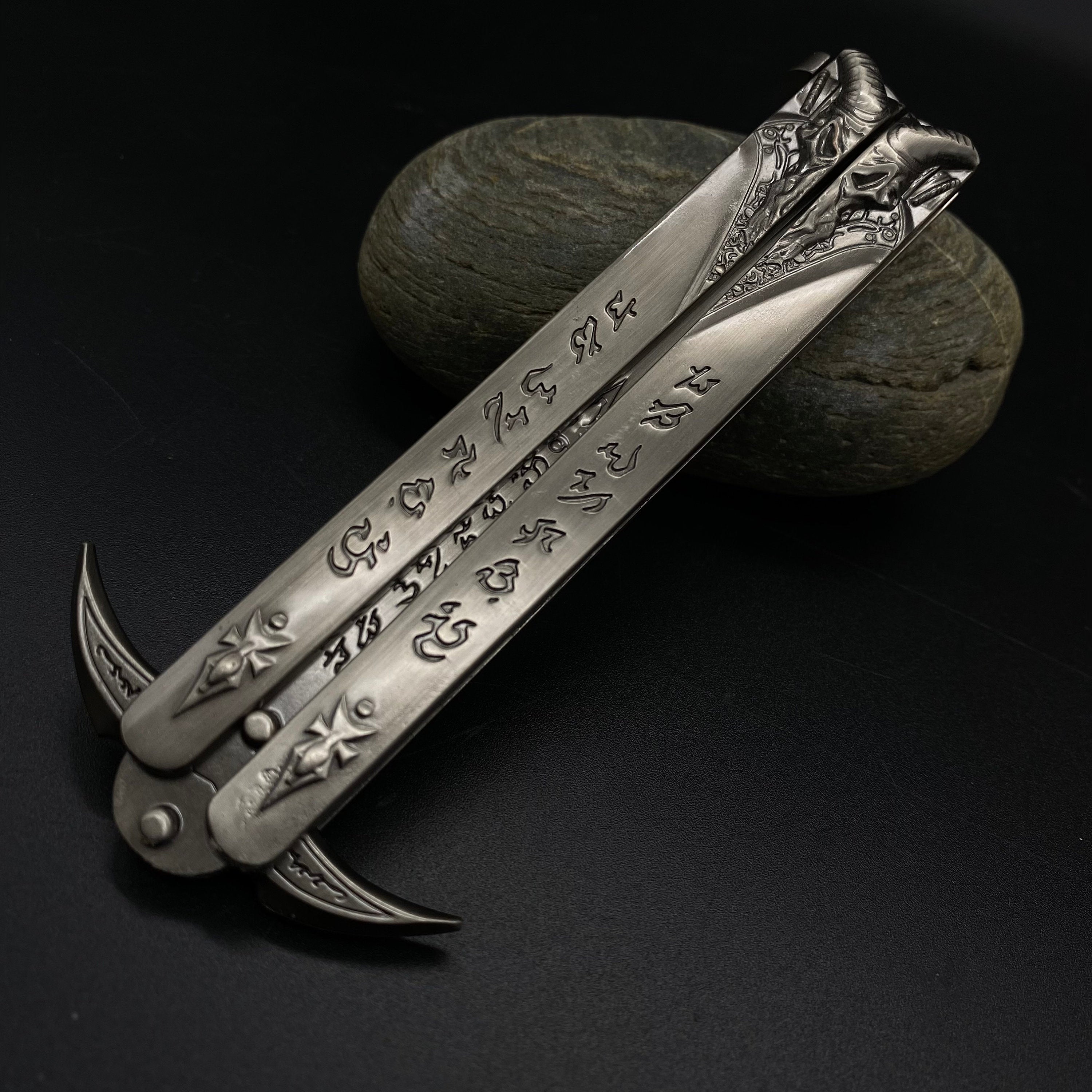
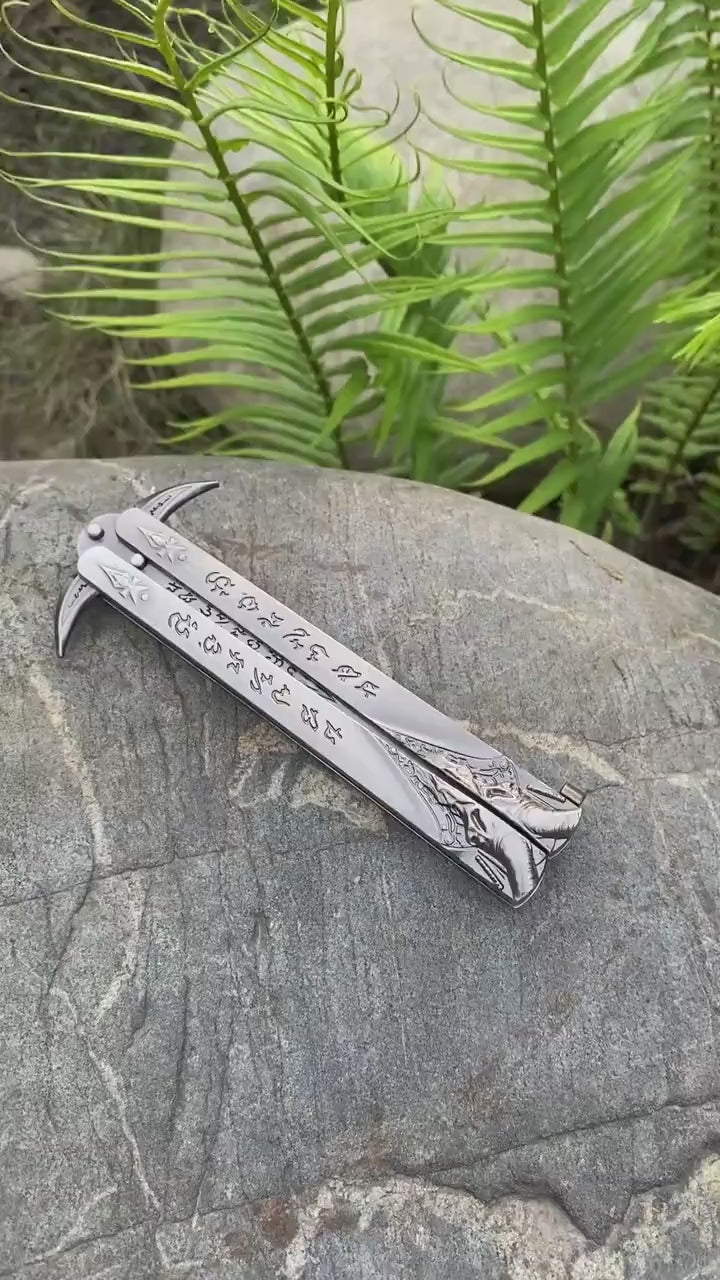

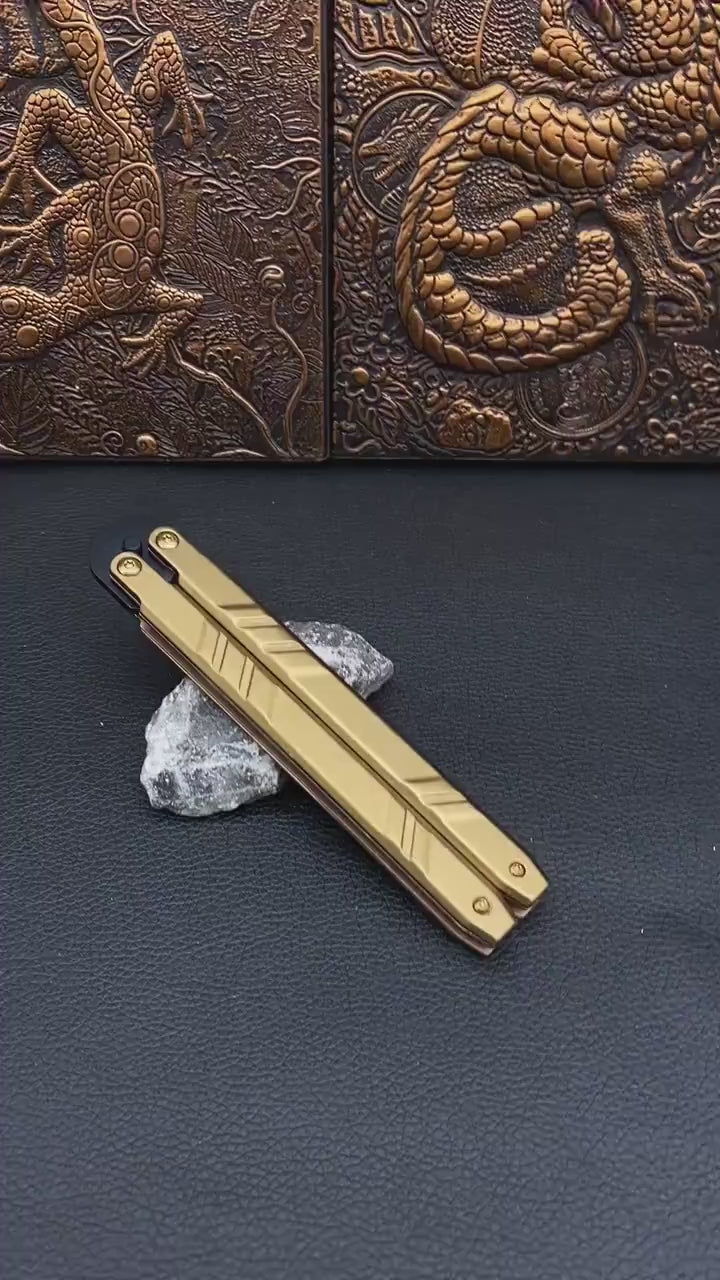
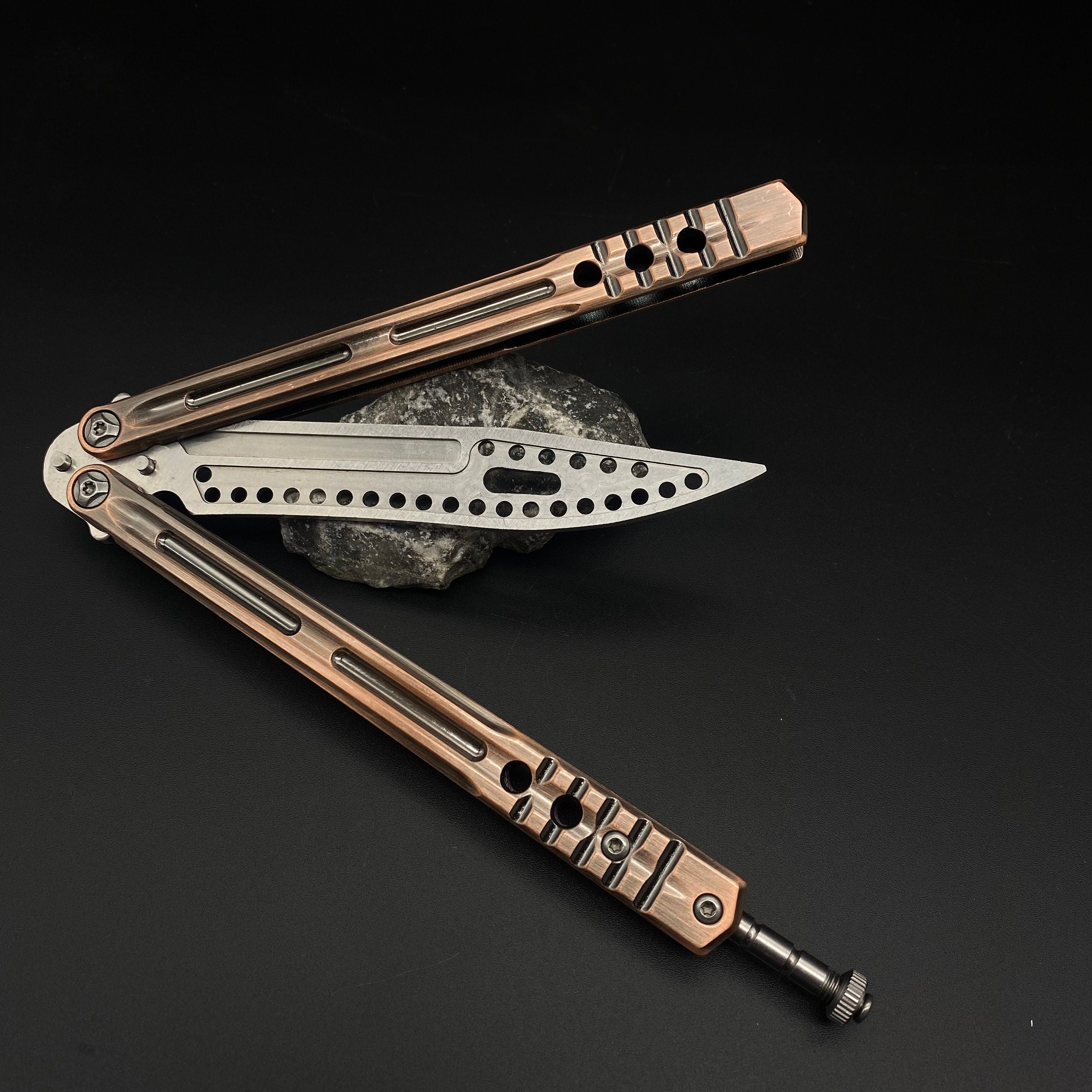
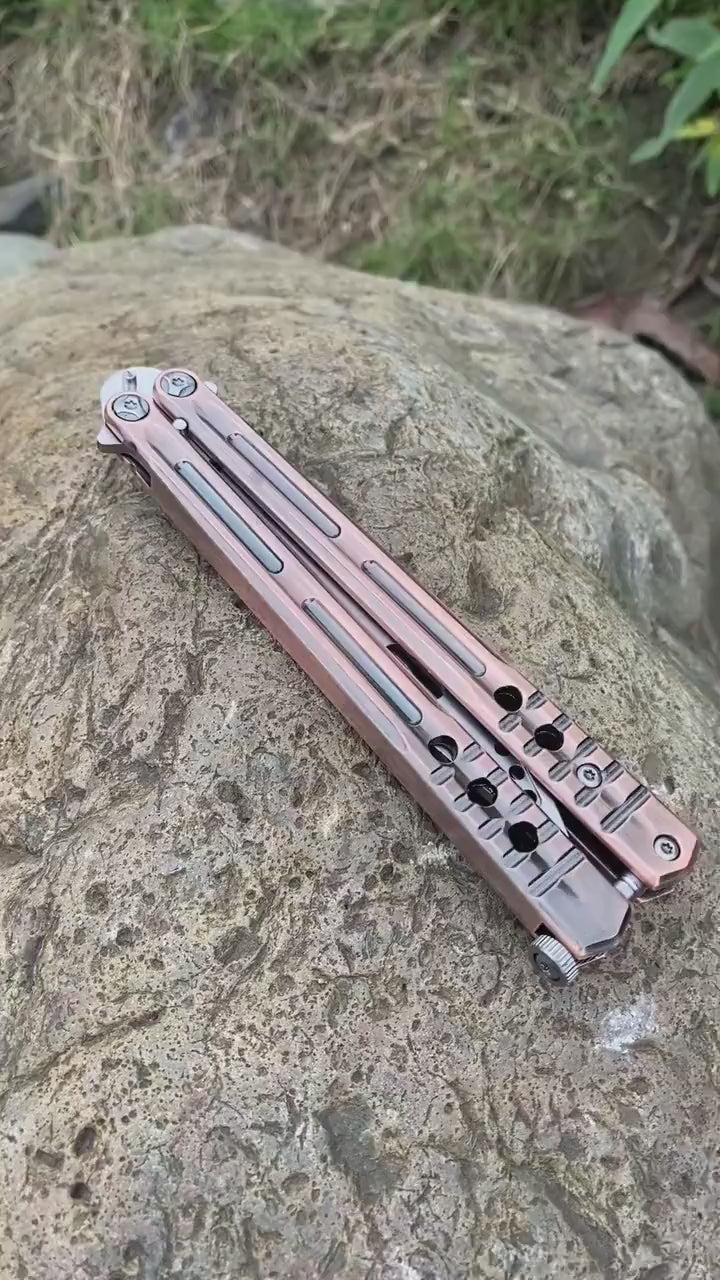
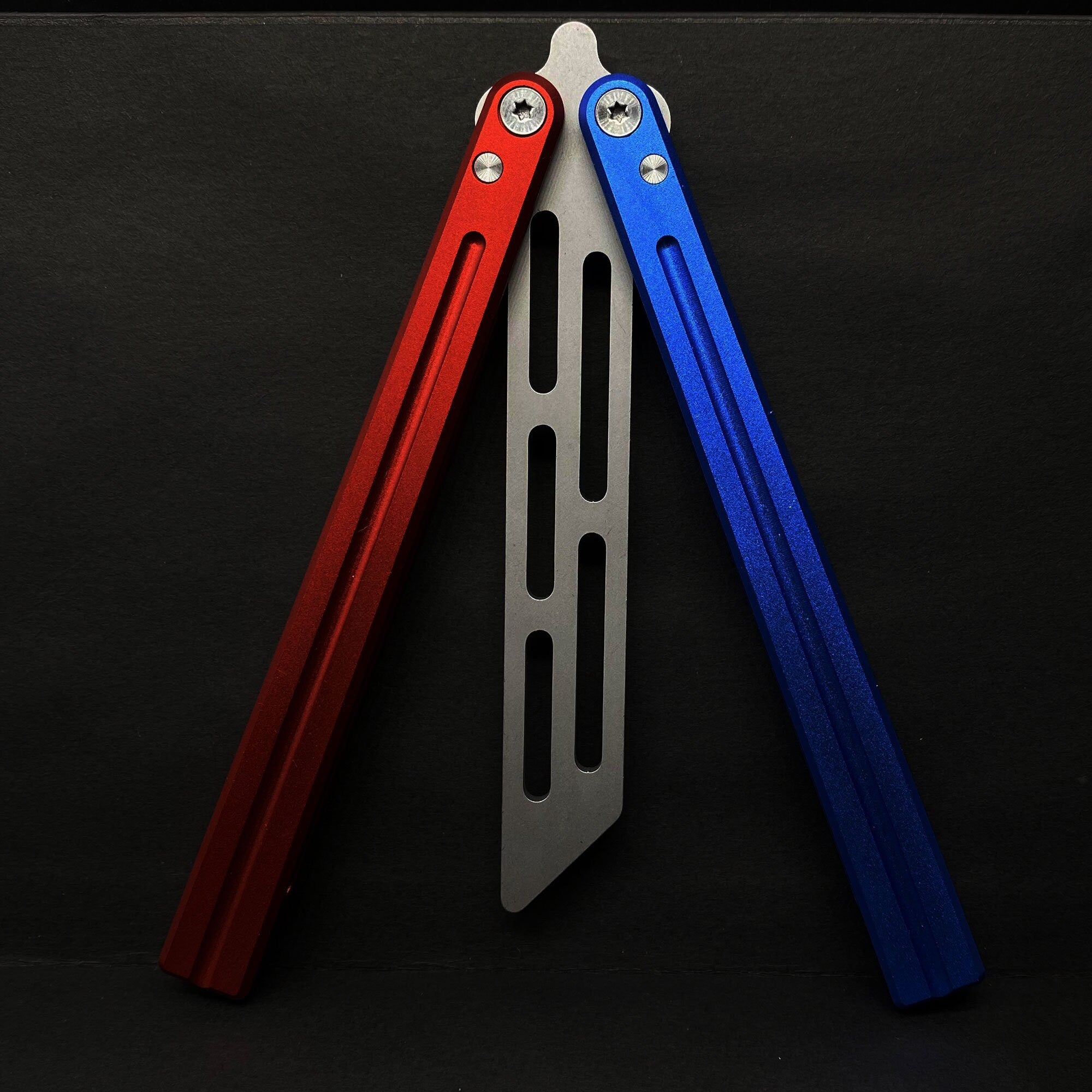
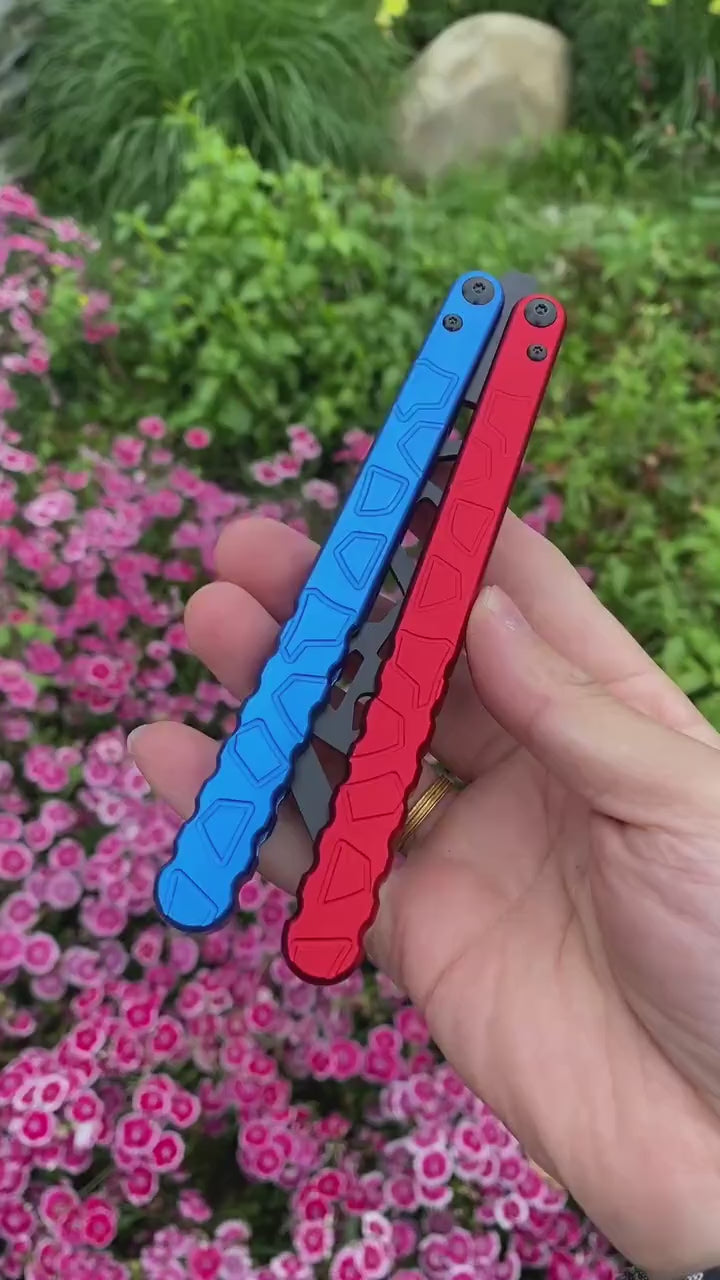
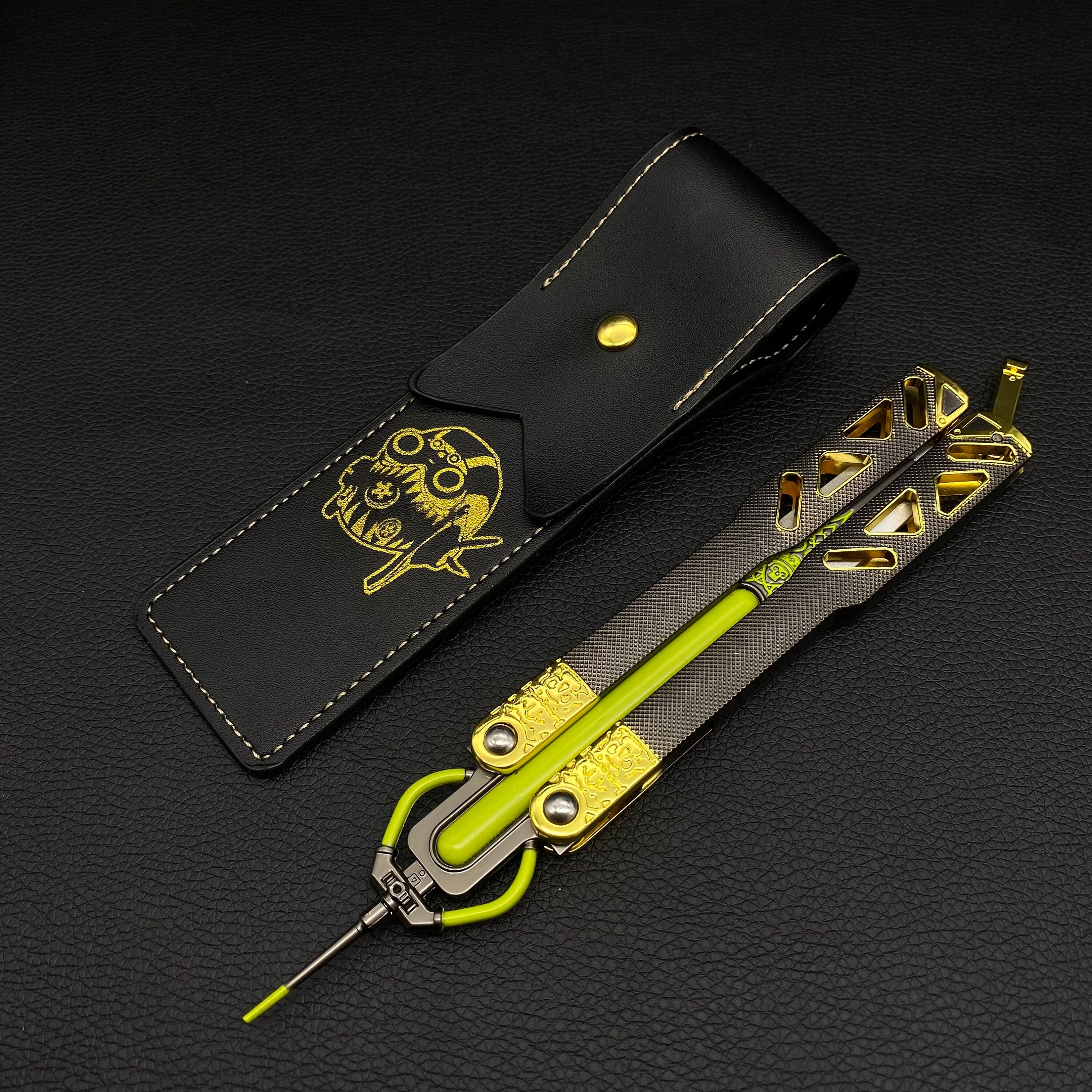
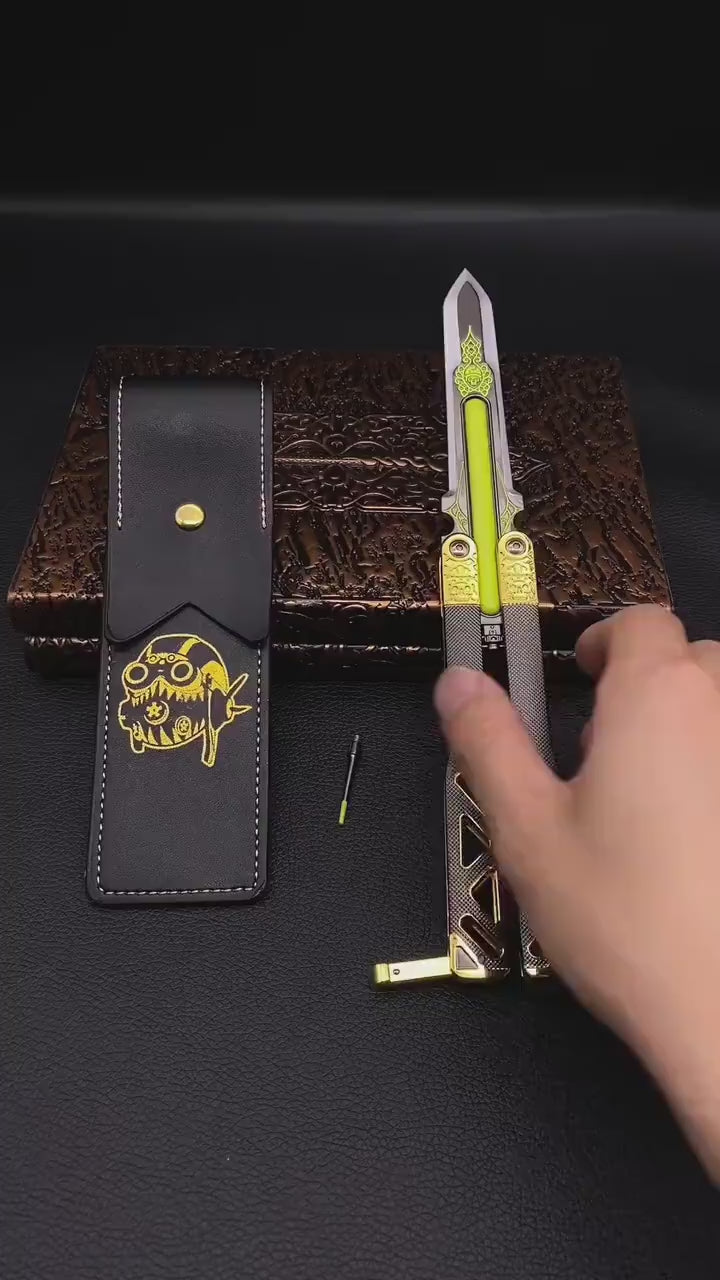

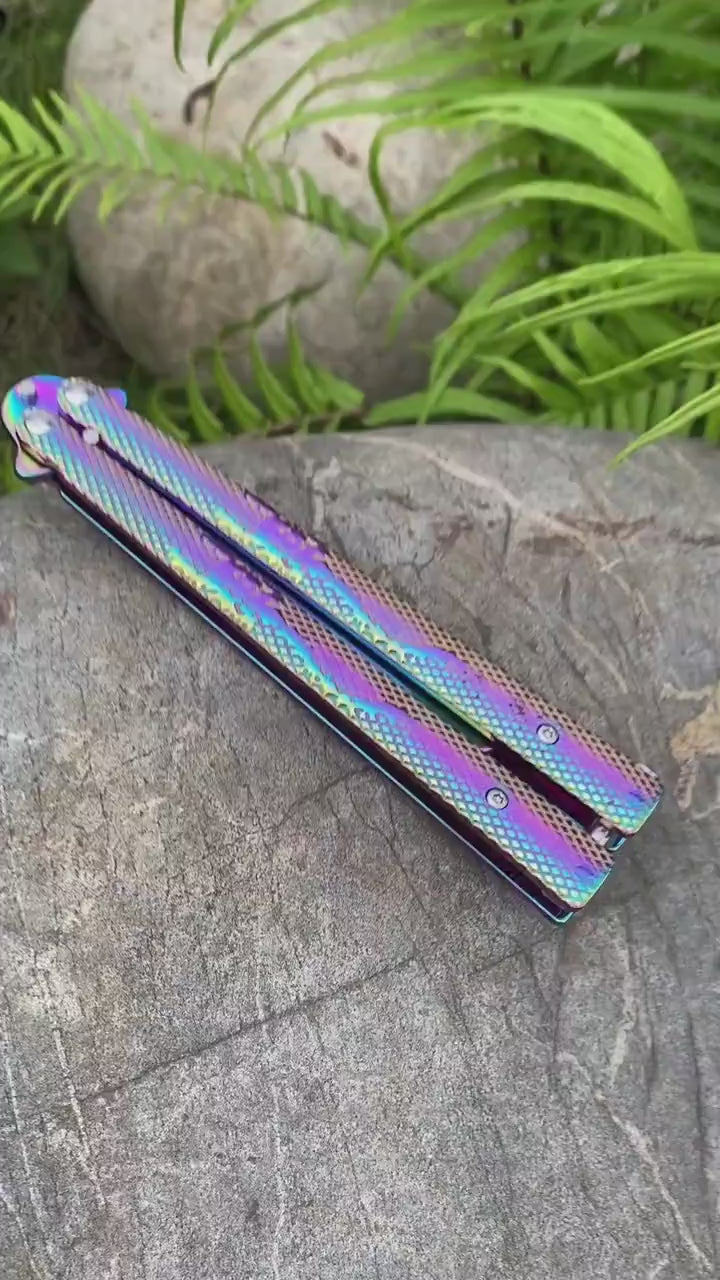
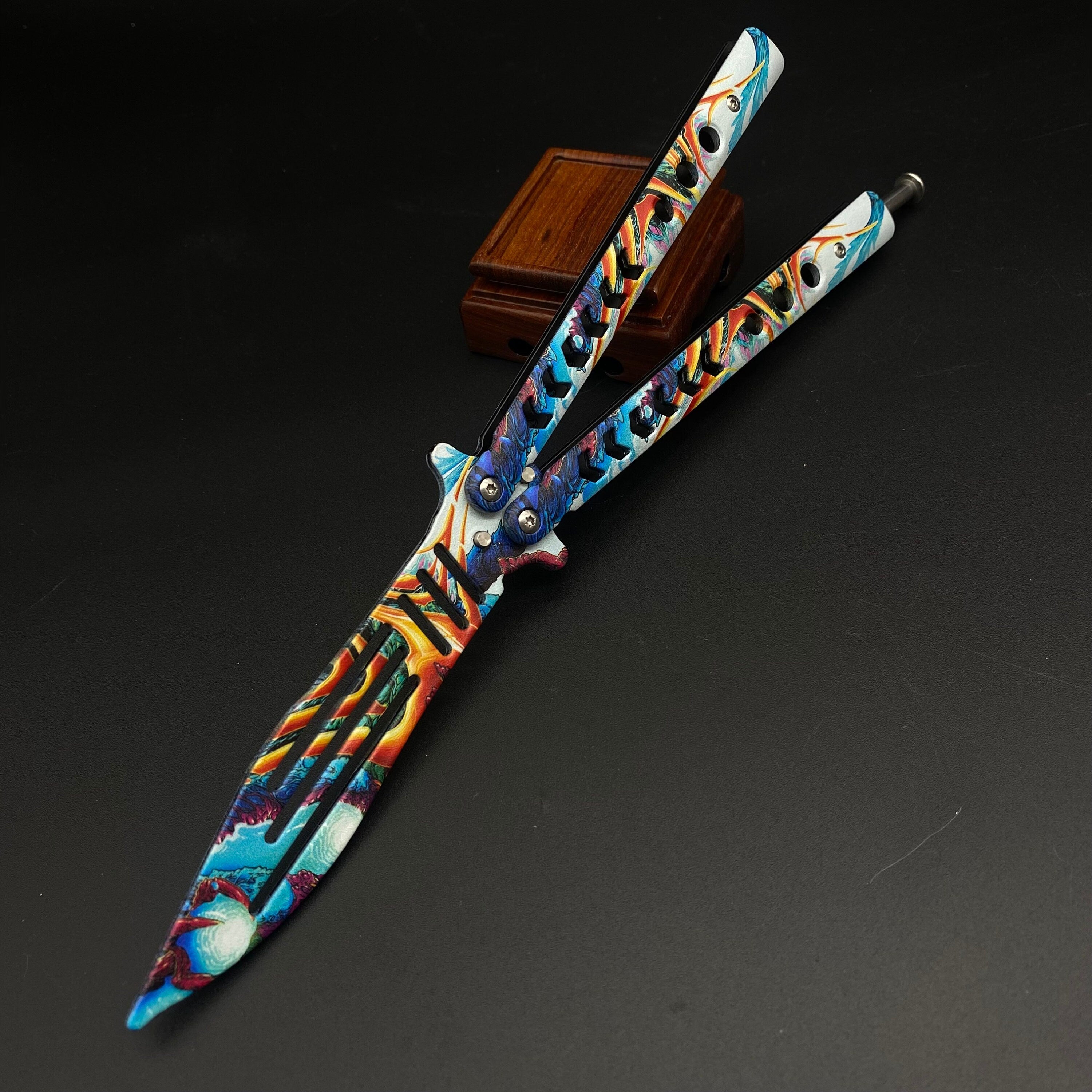
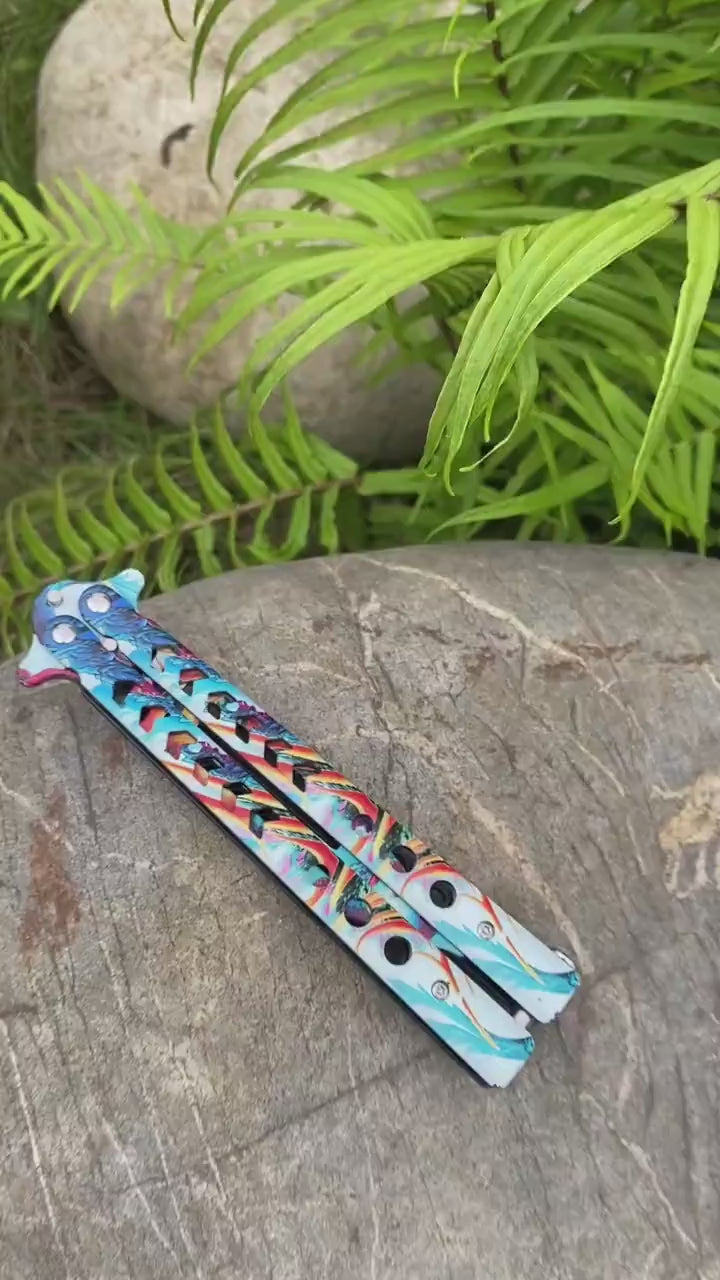
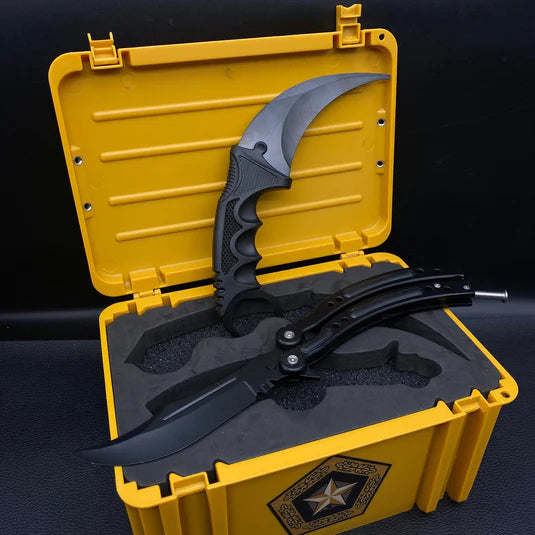
The Very Unique Butterfly Knives Brand
More than a hundred different and unique knives. We imagine and design trainer knives with a smooth movement that you will love.
> Shop NowA butterfly knife trainer is a standard balisong without a blade. It is 100 percent legal in the us and, unlike a knife, you can't cut yourself.
For sharpened butterfly knives, the vast majority of states in America allow butterfly knives without any restrictions, however some states doesn't allow them, here is a list :
- Puerto Rico
- Guam
- U.S. Virgin Islands
- American Samoa
- Northern Marianas
- U.S. Navy vessels
- Government and commercial aircraft
The knife's central steel component is the blade, safely enclosed by both handles when shut. While one side of the blade is razor-sharp, demanding cautious handling to avoid injuries during knife flips, its opposite edge, termed the 'swedge,' is non-cutting. The swedge often makes contact with the user's hand during flipping, but poses no cutting risk. This structure ensures both functionality and safety for knife enthusiasts.
Bite Handle: The handle linked to the blade's sharp edge. Holding this when the knife closes might lead to cuts. Typically, this handle houses the latch.
Choil: A non-sharp section of the blade near the kicker, facilitating easy sharpening.
Kicker: The part of the blade preventing its sharp edge from making contact with the handle's interior. Some designs might include an extra tang pin above the pivot points.
Latch: A conventional lock keeping the knife shut. Sometimes, magnets replace the latch mechanism.
Latch Types:
- Batangas Latch: Attached to the bite handle.
- Manila Latch: Fixed to the safe handle.
- Spring Latch: Uses a spring mechanism, activating the latch open when the handles are pressed.
- Latch Gate: A barrier inside the handle's channel, preventing the latch from hitting the blade.
Pivot Joint: A crucial pin around which the Tang, Blade, and Handle structures rotate.
Safe Handle: The handle that closes against the blade's non-sharp side, usually devoid of a latch.
Swedge: The blade's non-sharp spine. Some balisongs might have additional sharpening here, resembling a traditional or Kris sword design.
Tang: The blade's foundation, connected to the handles via pivot pins.
Tang Pins: Designed to separate the blade from the handle when shut, maintaining sharpness. Some designs feature a second pin to minimize handle clashing during manipulation.
Zen Pins: Internal handle screws that interact with the tang's kicker, ensuring the blade remains steady when open or closed.
Blade:The central steel component of the knife, held firm by both handles. The blade's one edge is razor-sharp, requiring caution during use. The other, known as the swedge, is dull, often coming into contact with the hand during knife flips without causing harm.
Flipping a butterfly knife, often referred to as a balisong, can be both an art and a skill. For beginners, there might be a learning curve as the knife's unique design requires specific hand movements to flip safely and efficiently.
Several factors determine the difficulty level:
1. Quality of the Knife: A well-balanced and smoothly pivoting butterfly knife can make the flipping process easier and more fluid.
2. Technique: Like any skill, proper technique is crucial. There are numerous tutorials and training sessions available online that can guide enthusiasts on correct flipping methods.
3. Safety Precautions: It's advisable to start with a trainer knife, which has a dull blade, to practice without the risk of cuts. This helps in building confidence and muscle memory.
4. Consistent Practice: Mastery in flipping a butterfly knife comes with consistent practice. The more you practice, the more natural and effortless the movements become.
The terms "butterfly knife" and "balisong" often create some confusion among knife enthusiasts and the general public alike. Here's a clear explanation:
In essence, there's no fundamental difference between a butterfly knife and a balisong. They refer to the same type of folding pocket knife. The primary distinguishing feature of this knife is its two handles that rotate around its pivot, allowing the blade to be concealed within the handles when closed.
The term "balisong"originates from the Philippines, where the knife is believed to have its roots. "Balisong" is a traditional name, and the knife itself has deep cultural significance in Filipino history and martial arts.
On the other hand, "butterfly knife" is a more modern, colloquial term, possibly derived from the knife's action resembling the fluttering of a butterfly's wings when opened and closed. This name became more popular in Western countries.
In summary, while the names might differ, they refer to the same unique and iconic folding knife. The choice of term often depends on regional or cultural preferences.
1.Safety: Begin with a trainer knife for safe practice. Ensure dry hands and be aware of the edge.
2.Grip: Hold the safe handle (without the latch) using either a basic or pinch grip.
3.Open: Flick wrist back, spinning the safe handle, then catch the bite handle to open fully.
4.Close: From an open position, spin the bite handle and shift grip to catch the safe handle, closing the knife.
5.Maintenance: Regularly check screws and clean the blade.



